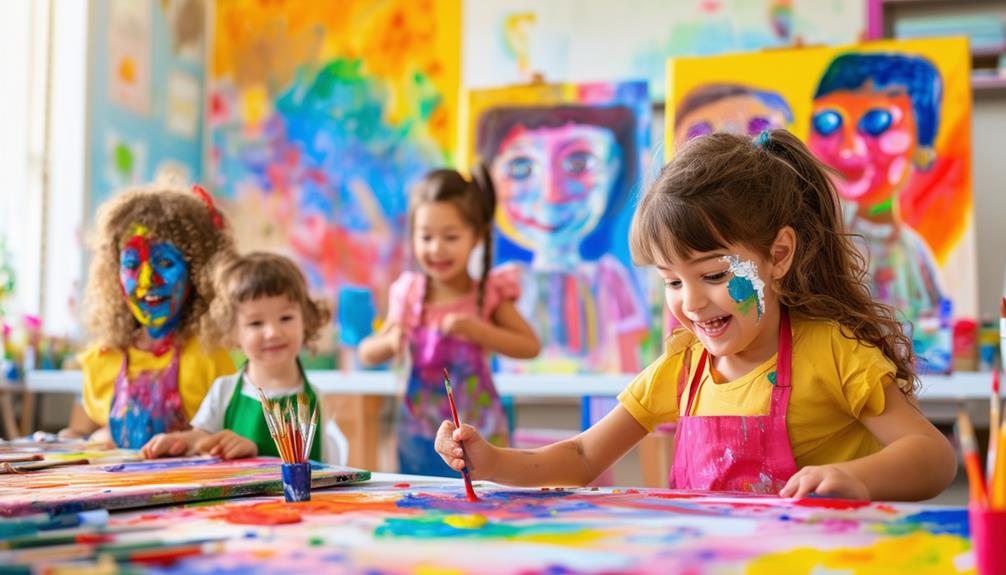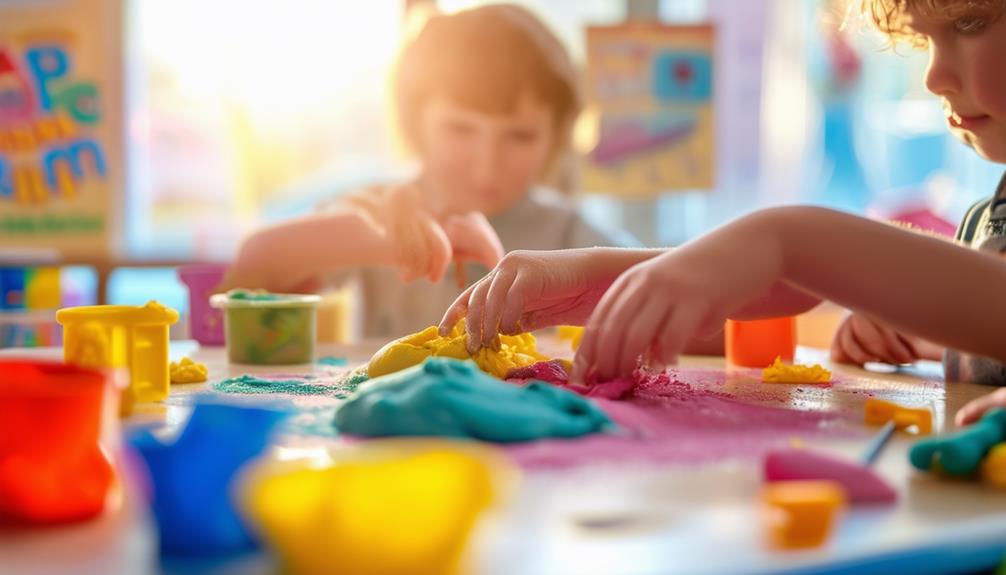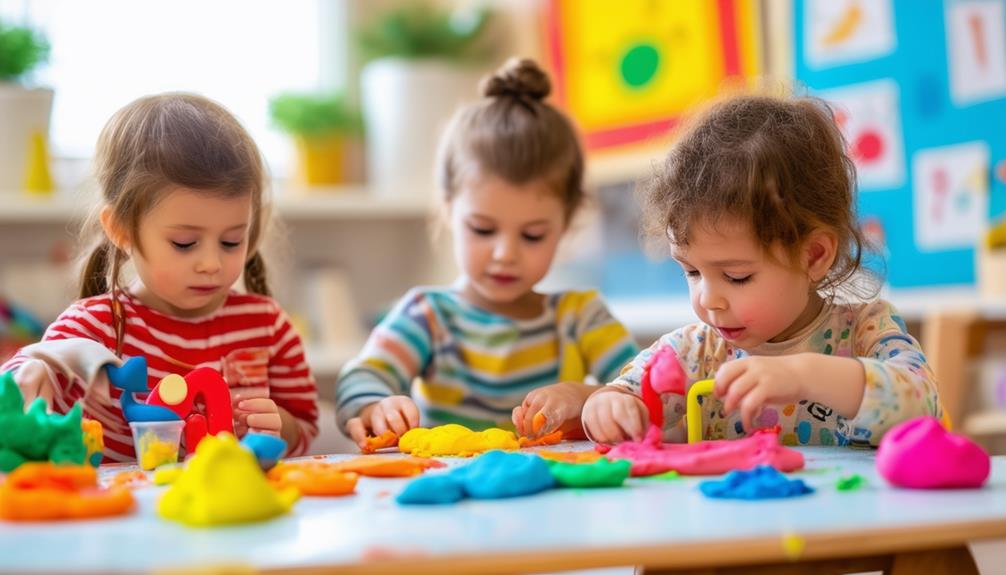The Importance of Art in Early Childhood Education

Incorporating art into early childhood education significantly impacts a child's development. Engaging in creative activities enhances fine motor skills, cognitive abilities, and emotional intelligence. When children paint, draw, or sculpt, they learn to solve problems and express their emotions healthily. Additionally, these artistic activities positively influence their social skills and language development.
Cognitive Development
Art plays a crucial role in early childhood education by significantly enhancing cognitive development. When children engage in artistic activities, they are not merely having fun; they are also developing essential problem-solving skills. As they plan and create their art projects, they learn to think critically and make decisions, laying the groundwork for future cognitive abilities.
By experimenting with various materials and techniques, children develop the capacity to think creatively within constraints. This kind of creative thinking is vital because it teaches them to approach problems from different perspectives and find innovative solutions. For example, when a child decides how to draw a particular shape or what colors to use, they are engaging in early forms of decision-making and critical thinking.
Art also introduces children to fundamental math concepts such as shapes, patterns, and spatial awareness. These elements foster early math skills, which are crucial for cognitive development. Additionally, the act of creating art improves attention spans and helps children learn to manage frustration effectively, further enhancing their cognitive abilities. By integrating art into early education, you provide children with the tools they need to develop robust cognitive skills that will benefit them across all areas of life.
Fine Motor Skills
Engaging in creative activities like coloring, cutting, and pasting significantly enhances young children's fine motor skills. These activities are not only enjoyable but also crucial for developing hand-eye coordination and manual dexterity. When children use paintbrushes, crayons, and scissors, they engage the small muscles in their hands and fingers, gaining precision and control. This hands-on experience is vital for developing fine motor skills essential for tasks such as writing and drawing.
Art activities provide a practical and enjoyable way to strengthen these skills. Through repeated engagement, children improve their ability to manipulate objects, which is critical for daily tasks and academic success. For example, cutting paper with scissors or drawing shapes helps refine the movements needed for more complex skills. This foundational development is invaluable as children progress in their education, fostering greater independence and capability.
Moreover, these activities boost confidence. As children observe their improving abilities, they are more likely to embrace new challenges. In essence, art activities not only develop fine motor skills but also prepare children for future success in school and life.
Emotional Growth

When children engage in art, they express their emotions in a creative way, which helps them process complex feelings. This artistic exploration builds emotional intelligence and fosters empathy. By creating art, children also develop emotional resilience, gaining confidence and coping skills for life's challenges.
Expressing Emotions Creatively
Children can better navigate and express their emotions through creative activities such as painting, drawing, and crafting. These forms of artistic expression significantly contribute to emotional growth and childhood development. Engaging in creative activities provides children with a therapeutic outlet to communicate their feelings, which might be difficult to articulate with words.
Art offers a safe and constructive medium for children to explore a wide range of emotions, including joy, sadness, anger, and excitement. The act of creating helps them process these feelings in a healthy way. For instance, a child struggling with frustration might find relief in splattering paint on a canvas, while another might draw a picture to express happiness.
Developing Emotional Intelligence
Developing emotional intelligence through art is a crucial aspect of early childhood education. Artistic activities promote emotional growth by fostering self-awareness and empathy. When children engage in art, they can express and process complex emotions effectively, making it an essential part of their development.
Art serves as a therapeutic outlet, helping children manage stress and difficult feelings. Creating art allows them to communicate and understand their emotions within a safe and nurturing environment, laying the groundwork for healthy social relationships and emotional well-being.
Here are four key benefits of developing emotional intelligence through art for children:
- Self-Awareness: Children learn to recognize and express their feelings through their artistic creations.
- Empathy: Observing others' art helps children understand and appreciate diverse emotional experiences.
- Stress Management: Art provides a therapeutic outlet, reducing anxiety and promoting calmness.
- Social Skills: Collaborative art projects teach cooperation, sharing, and valuing others' perspectives.
Incorporating art into early childhood education is not just about fostering creativity; it is essential for developing emotional intelligence and promoting emotional growth. These skills are vital for building healthy social relationships and thriving in various aspects of life.
Building Emotional Resilience
Engaging in art nurtures emotional resilience by offering children a creative means to explore and process their feelings. Immersing in artistic activities provides a safe, non-verbal way for kids to understand and articulate their emotions, fostering self-awareness as a cornerstone of emotional growth.
Art serves as an excellent outlet for self-expression, boosting children's self-esteem and confidence—key elements in building emotional resilience. By confronting artistic challenges, children enhance their problem-solving skills, learning to manage frustration and setbacks, which equips them to face real-life challenges with a positive mindset.
Additionally, artistic endeavors promote empathy and self-regulation. Through creation, children often reflect on their emotions and experiences, deepening their understanding of themselves and others, thus enriching emotional intelligence.
Participation in art activities fosters a sense of accomplishment, further reinforcing emotional resilience. Proud of their creations, children gain confidence, helping them effectively navigate emotional highs and lows. Consequently, integrating art into early childhood education is crucial for emotional development and resilience.
Social Skills
When your child engages in art activities, they develop essential social skills by collaborating and sharing materials. These interactions improve their communication and empathy, fostering a deeper connection with their peers. Art also encourages them to appreciate diverse perspectives, which is crucial for teamwork and cultural awareness.
Fostering Teamwork and Collaboration
Collaborative art projects teach children to work together towards shared goals, enhancing social skills and fostering a sense of community. In early childhood education settings, these projects help young learners develop essential abilities such as communication, sharing, and problem-solving. By engaging in teamwork, children learn the value of collaboration and appreciate each other's contributions.
When children participate in group art projects, they develop skills to:
- Communicate effectively: Expressing ideas and listening to others improves their communication skills.
- Share resources: Learning to share materials fosters generosity and consideration.
- Solve problems together: Facing challenges as a team encourages critical thinking and collective problem-solving.
- Respect diverse viewpoints: Acknowledging different ideas enhances their ability to negotiate and compromise.
Encouraging teamwork in art projects not only builds social skills but also creates a sense of belonging and community. As children collaborate on creative tasks, they form bonds and learn to value the strengths and talents of their peers. Art-based group activities are a powerful tool in early childhood education for nurturing cooperation and developing vital social skills.
Enhancing Communication and Empathy
Art in early childhood education enhances communication and empathy by encouraging children to express their thoughts and emotions visually. Engaging in art activities develops essential communication skills, enabling children to convey feelings and ideas without relying solely on words, thereby fostering non-verbal communication.
Creative projects also nurture empathy by helping children understand and appreciate different perspectives, which is crucial for emotional development. Observing a peer's artwork allows children to recognize diverse ways of seeing and interpreting the world, promoting empathy.
Additionally, art fosters social skills through collaborative projects that require sharing materials, taking turns, and discussing ideas. This interaction helps children practice effective communication and learn the importance of teamwork.
Moreover, art activities create a supportive space for children to explore and express their emotions freely. This freedom of expression aids in better self-understanding and, in turn, enhances compassion towards others.
Language Development

Engaging children in art activities significantly enhances their language development. While participating in art, children build essential language skills through enjoyable and interactive experiences. Discussing their artwork helps them learn new terms related to colors, shapes, and materials, fostering clearer articulation of thoughts.
Art activities contribute to language development in the following ways:
- Vocabulary Expansion: Children acquire and use new words, such as 'texture,' 'shade,' and 'pattern,' enriching their everyday vocabulary.
- Emergent Writing Skills: Writing their names or simple descriptions on their artwork supports early literacy and improves emergent writing abilities.
- Communication: Describing their art to peers or adults enhances effective communication, enabling children to express ideas and understand different perspectives.
- Literacy Development: Incorporating written elements like labeling or storytelling into art projects further strengthens literacy skills.
Creative Expression
Engaging in art activities not only enhances language skills but also serves as a vital outlet for children to explore their imagination and express themselves creatively. Through creative expression, children can safely and constructively examine their thoughts and emotions. Manipulating art tools and materials also helps them develop fine motor skills essential for tasks like writing and buttoning clothes.
Artistic expression is not merely about producing visually appealing works; it significantly contributes to cognitive development. By choosing colors and structuring their artwork, children enhance their problem-solving abilities and critical thinking skills, laying a foundation for more complex cognitive tasks they will encounter later in life.
Additionally, art promotes emotional well-being by offering a constructive outlet for self-expression. Children can explore and communicate their emotions through their creations, which is particularly beneficial for those who find verbal expression challenging. Witnessing their creative work come to life boosts their confidence and self-esteem, fostering a sense of accomplishment that positively influences other areas of their lives. Therefore, encouraging creative expression in early childhood education is essential for a child's overall development.




